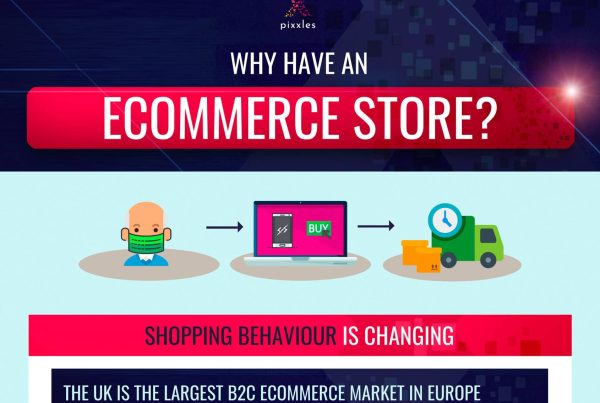Fintech vs Banks Overview
The financial sector is changing at a staggering pace. In fact, just 10 short years ago, the introduction of mobile banking apps and digital wallets was considered groundbreaking.
Now, newly emerging technologies in the banking sector, such as artificial intelligence and blockchain, are poised to reshape the financial services landscape in ways we could only dream of 10 years ago.
As these innovations (and others) gain traction, banks and financial institutions must adapt to meet the evolving demands of tech-savvy customers. Rather than fight with fintech companies, traditional financial institutions should cooperate with fintechs to leverage their unique strengths.
Rising to the Digital Challenge
Many conventional banks, however, have yet to fully harness the potential of modern technology. This has led to a growing concern about the poor user experience and lack of efficiency of traditional banks. Critics often point to outdated systems and cumbersome processes.
To stay relevant and competitive, traditional financial institutions need to streamline their operations and prioritize customer-centric solutions.
What is Fintech?
Fintech, which is short for “financial technology,” is the use of technology and finance to deliver financial services and solutions.
The goal of fintech is to enhance financial services and make them more accessible.
Attributes of Fintech
Digital transformation – Fintech signifies the shift from traditional banking to digitized, online platforms.
Accessibility – Fintech aims to democratize access to financial tools, making them available to a broader audience, especially underbanked or unbanked populations.
Automation and efficiency – Many fintech solutions utilize automation and artificial intelligence to streamline and optimize financial processes.
Customization – Fintech sometimes uses big data analytics to offer personalized financial advice, insights, and product recommendations.
Transformation – Fintech has the potential to transform traditional financial systems and institutions with more agile, innovative alternatives.
Diverse services – Fintech encompasses a wide range of financial activities, from mobile banking to cryptocurrency exchanges.
Enhanced security – Fintech solutions often incorporate advanced security measures, such as blockchain, biometrics, and multi-factor authentication.
Global reach – Fintech breaks geographical boundaries, enabling global transactions and services.
User-centric approach – Fintech solutions are often designed with the user in mind, emphasizing the user experience.
» MORE: What Is The Difference Between A Bank and A Payment Processor?
Why is Fintech Growing?
Fintech is growing for the following reasons:
- Mobile banking is getting more popular
- Cryptocurrencies are growing in popularity
- Fintech helps simplify payments
- Fintech helps increase financial access
- Fintech adapts to consumer needs swiftly
- Fintech offers personalized financial advice
- Fintech reduces costs with automation
- Fintech facilitates international transactions seamlessly
- Fintech integrates with artificial intelligence and machine learning
These reasons and more are fueling explosive growth in the fintech sector.
Remarkably, according to Josh Howarth, writing for Exploding Topics, the fintech space is on track to surpass $400 billion by 2027. Additionally, according to Statista, as of May 2023, there are over 9,600 fintech startups in the EMEA region alone.
Is Fintech Considered Banking?
The answer is “sort of.”
Traditional Banks
Traditional banks have long been the cornerstone of the financial system, offering a suite of services ranging from savings and checking accounts to loans and mortgages.
Their primary role is to accept deposits from the public and then use those funds to provide loans, all under a strict regulatory environment that ensures the safety and security of the depositor’s money.
Fintech
Fintech, on the other hand, represents a diverse range of technologies designed to enhance financial services.
Rather than being a singular entity like a bank, fintech is an umbrella term encompassing a vast array of technological solutions, platforms, and applications aimed at optimizing the delivery of financial services.
While traditional banks and fintech platforms intersect, they aren’t identical.
Traditional banks usually come with a history of established trust, a broad range of services, and a specific regulatory framework. Fintech companies, meanwhile, prioritize speed, innovation, and user experience, sometimes operating in niche areas of finance that traditional banks haven’t ventured into.
The lines between traditional banking and fintech, however, are blurring. Many banks are now partnering with fintech companies or developing their own technological solutions to offer better experiences to their customers.
Conversely, some fintech companies are exploring opportunities to become more bank-like, providing a broader range of services or even seeking banking licenses.
Traditional Banks and Fintechs: A Deeper Dive into Their Differences
Here are the main differences between fintech companies and traditional banks:
1. Customer Convenience
Traditional banks require an in-person visit for certain services, such as opening an account. Fintechs, on the other hand, typically offer services digitally, providing 24/7 access via smartphones or computers.
With that said, banks often provide better customer service than fintech companies. This is due to the range of services that they offer, such as savings and checking accounts, loans, credit cards, and wealth management. Banks, by definition, have to be good at developing and maintaining relationships with customers.
Fintech companies, in contrast, are more focused on technological development. While fintech services are designed to be highly personalized, fintech companies are ironically often less personal than banks when it comes to customer service.
2. New Technologies
While banks certainly utilize and even pioneer technology, they’re more concerned with offering traditional financial services than fintech companies.
Traditional banks are also generally slower to adopt and integrate the latest technologies, often due to legacy systems. Many banks have decades-old infrastructure that doesn’t easily adapt to the rapidly changing technological landscape.
Fintechs, however, are inherently tech-centric and tend to adapt quickly to the latest technological innovations.
3. Regulatory Requirements
Traditional banks are subject to strict regulatory oversight, which ensures a high level of consumer protection. Fintechs, by comparison, have operated with less regulation over the years, but as they’ve grown, there’s been an increase in regulatory scrutiny.
Today, traditional banks and fintechs follow different sets of overlapping rules.
Laws for banks focus on:
- Financial system stability
- Protecting deposits
- Stopping money laundering
- Safeguarding consumer rights
Laws for fintechs concentrate on:
- Promoting innovation
- Data protection
- Preventing fraud
- Encouraging fair competition
- Digital consumer protection
Please bear in mind that there is plenty of overlap between these two sectors as far as laws are concerned. Banks, for instance, are also very interested in preventing fraud.
4. Risks
Traditional banks are more established and, we would argue, face less overall risk than fintech companies.
Fintechs, meanwhile, face substantial technological challenges, scalability issues, and sometimes uncharted regulatory waters, making them potentially more volatile.
5. Operational Costs
Traditional banks tend to have higher operational costs due to physical branches, staff, and maintenance of older systems.
Fintechs, conversely, operate mainly online, which can reduce overhead and allow for more competitive pricing.
6. Flexibility and Agility
Traditional banks are larger institutions that are less agile and require a longer time to implement changes. But this also makes them more stable.
Fintechs are structured to be more flexible and are able to pivot and adapt to market changes rapidly. But this can make them volatile and unpredictable.
7. Partnerships and Collaboration
Traditional banks have historically operated independently but are increasingly seeking partnerships with fintechs.
From the beginning, fintechs have sought partnerships and integrations with traditional banks to expand their reach and offerings.
How are Fintech and Traditional Banks Working Together?
While there is plenty of competition between fintech companies and traditional banks, they also cooperate in the following areas.
- Software development
- Digital payment solutions
- Data analysis and insights
- Lending platforms (Some fintechs specialize in creating peer-to-peer lending platforms, which banks can partner with to broaden their loan offerings.)
- Cybersecurity
- Regtech (regulatory technology)
- Cross-sector partnerships
- Customer onboarding
- Infrastructure
- Open banking initiatives (Some fintechs assist banks in adopting open banking, enabling third-party developers to create apps and services using bank data.)
- Joint workshops and think tanks
Will Fintech Replace Traditional Banking?
The fintech sector is certainly a powerful force these days, but we don’t think it will replace traditional banking by any stretch.
What we’re observing, instead, is a metamorphosis within the banking sector, as traditional banks actively engage, collaborate with, and invest in state-of-the-art fintech startups.
We expect the future of finance will likely be a hybrid model where the agility and technological prowess of fintech companies are combined with the stability and infrastructure of conventional banks.
Infrastructure is of key importance here.
Traditional banks have amassed an extraordinary physical infrastructure over the centuries, one which would be virtually impossible for fintech companies to operate without, much less subvert.
Even if fintech companies could operate independently from the established banking infrastructure, there’s inherent value in legacy infrastructure.
Fintech companies stand to benefit greatly by working with what’s already in place, especially when it comes to creating and integrating large-scale payment systems.
Key Sectors within Fintech Companies
- Payments
- Digital lending
- Wealth management
- Blockchain
- Insurtech
- Regtech
- Personal financial management (PFM)
- Robo-advisors
- Crowdfunding platforms
- Peer-to-peer (P2P) lending
- Cryptocurrencies and digital currencies
- Neobanks or challenger banks
- Forex and stock trading platforms
- Cybersecurity for financial services
Get in touch with Pixxles
Pixxles is an FCA-authorised payment provider that puts our customers first. We are directly accountable to our customers and to the Regulator.
Visit our Contact page to speak with us and learn more.








